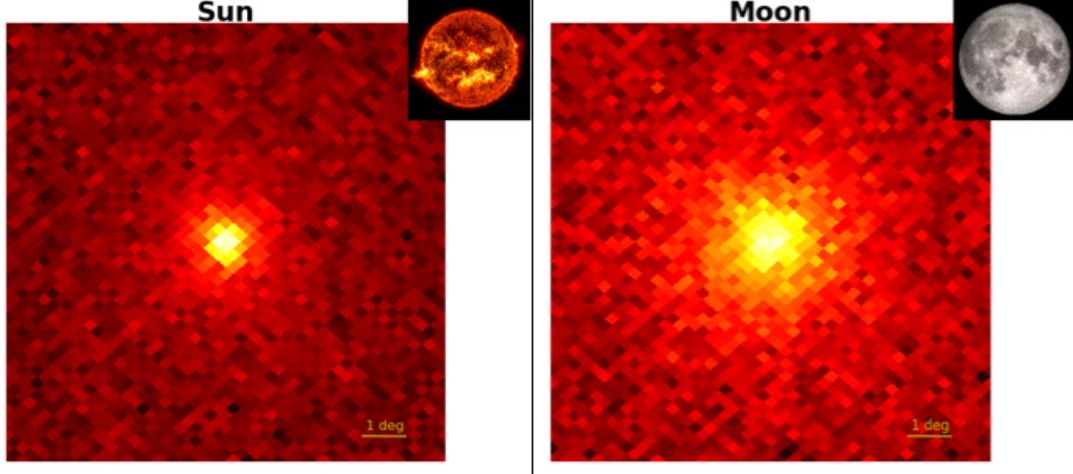
 Credit: NASA, DOE, International Fermi LAT Collaboration
Credit: NASA, DOE, International Fermi LAT Collaboration
Effects of Gamma-Rays on the Man-in-the-Moon (and Sun) Marigolds
Gamma-ray emission is the most energetic form of electromagnetic radiation. It's produced by the most powerul phenomena known - exploding stars, giant black holes devouring matter, the annihilation of matter and anti-matter, neutron stars that crash into each other. It is somewhat unnerving, perhaps, that natural sources of gamma-ray emission reside close to our home. The images above, from the Large Area Telescope on the Fermi Gamma-ray Space Telescope, show that both the Sun and the Moon are sources of gamma-rays, These heavenly bodies are not themselves steady Gamma-ray sources, however (although the powerful explosions from the Sun do produce outbursts of gamma-rays on occasion). They shine because both the Sun and Moon are pummeled by cosmic rays, broken bits of atoms accelerated to incredibly high energies by stellar explosions, among other things. These fast-moving, energetic particles collide with atoms in the moon's surface and in the atmosphere of the Sun, and these collisions convert some of the kinetic energy of the cosmic rays into gamma-ray radiation.
Published: February 18, 2019
<
HEA Dictionary ● Archive
● Search HEAPOW
● Other Languages
● HEAPOW on Facebook
● Download all Images
● Education ● HEAD
>

Each week the HEASARC
brings you new, exciting and beautiful images from X-ray and Gamma ray
astronomy. Check back each week and be sure to check out the HEAPOW archive!
Page Author: Dr. Michael F. Corcoran
Last modified Tuesday, 27-Feb-2024 10:08:23 EST


